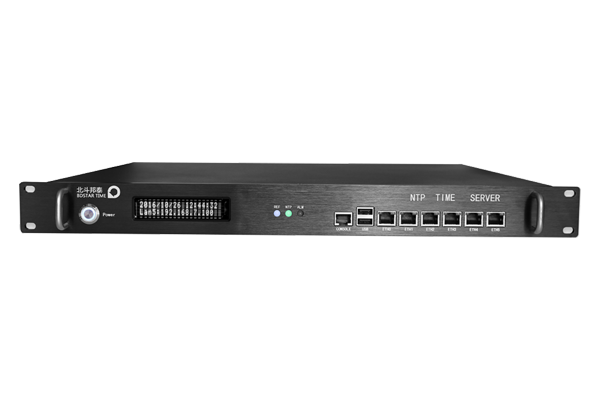PTP/NTP IE1588 Time Synchronization Server Solution for Rail Transit (High-speed Rail, Metro, Wireless, Coal Mine Base Station)
Introduction to PTP Server: The T800 high-performance clock server can be widely used in government, defense, finance, securities, insurance, mobile communications, cloud computing, e-commerce, energy and power, oil and petrochemicals, industrial automation, intelligent transportation, security, smart cities, and IoT fields.
Application Scenarios:
- The clock system is an important component of rail transit, providing unified and standardized time information to subway passengers and staff, as well as other systems. The clock system plays a crucial role in ensuring accurate timing of rail transit operations and improving operational service quality.
Time Synchronization Server Application Solution:
- The clock system consists of Beidou/GPS satellite receivers, primary master clock, secondary master clock, slave clocks, transmission channels, and network management.
- The system adopts a two-level network configuration with synchronization types of 422NTPPTP.
Advantages of Time Synchronization Server Solution:
1. High precision
2. High redundancy and reliability
3. Successful application of 1588V2 in rail transit clock systems
Server Performance:
- PTP: Master-slave synchronization accuracy of 10ns, user terminal synchronization accuracy of 100ns (with a standard network card)
- NTP: User terminal synchronization accuracy of 100μs
- Supports 256 PTP unicast clients, unlimited multicast clients
- NTP request rate: 23,000 requests/second
- Can be connected to another clock server to form a 2-level clock
Timing GNSS Receiver:
- Receiver type: 72-channel professional timing receiver
- GPS/QZSS L1 C/A, GLONASS L10F, BeiDou B1 SBAS L1 C/A: WAAS, EGNOS, MSAS, GAGAN, Galileo E1B/C
- Data update rate: Up to 4Hz for parallel GNSS
- Positioning accuracy: 2.5 meters CEP; Cold start: 28s; Hot start: 2s
- Timing accuracy: 20ns
Application Scenario of Time Synchronization Server:
- The SDH-based rail transit transmission subsystem requires network synchronization to ensure that all digital devices in the communication network operate at the same frequency, control sliding, reduce and suppress jitter, drift, and other impairments such as phase jumps, and minimize SDH pointer adjustments, thereby ensuring the normal operation of various communication services in the metro.
System Composition:
- The system includes a set of network synchronization devices as part of the control center equipment, which serves as the network synchronization equipment for the transmission system, providing standard synchronized timing reference signals to the transmission equipment and clock system.
Note: Some technical terms and specifications may require further clarification and adjustment based on the specific context and industry standards.
上一篇:BdStar NTP Network Time Server Helps Digital Currency Resear 下一篇:Solution for achieving precise timing and time synchronizati




